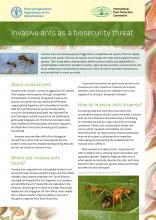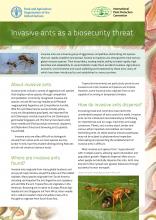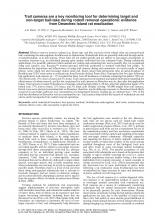Trail cameras are a key monitoring tool for determining target and non-target bait-take during rodent removal operations: evidence from Desecheo Island rat eradication

Island and Ocean Ecosystems
Available Online
Figuerola-Hernandez, C.
,
Samra, C.
,
Shiels, A.B.
,
Silander, S.
,
Swinnerton, K.J.
,
Will, D.
,
Witmer, G.W.
2019
Efforts to remove invasive rodents (e.g. Rattus spp. and Mus musculus) from islands often use toxicant-laced baits containing the anticoagulants brodifacoum or diphacinone. Rodenticide baits are generally delivered through aerial- or hand-broadcast, or in bait stations. These baits are not rodent-species and are subject to non-target consumption or secondary exposure (e.g. an individual preying upon another individual that has consumed bait). During rodenticide applications, it is generally unknown which animals are visiting and consuming bait; and to quantify this, we recommend using trail cameras (e.g. Reconyx motion-activated infra-red) positioned to monitor individual bait pellets. To demonstrate the importance and effectiveness of using trail cameras during such operations, we report results of target (Rattus rattus, black rat) and non-target (native land crab, lizard, insect) bait-interactions after an aerial-broadcast of Brodifacoum-25D Conservation to eradicate rats from Desecheo Island, Puerto Rico. During the ?rst ?ve days following bait application, trail cameras (n = 15) revealed that there were 40 incidences of animals contacting bait pellets: 50% rat, 32% hermit crab, 13% Ameiva lizard, and 5% insect. Trail cameras provide temporal and spatial information regarding the e?ectiveness of rodent removal, and the last rat pictured by trail cameras on Desecheo was six days after bait application began. Trail cameras revealed 30 incidences of animals contacting bait pellets 620 days after bait application began: 47% hermit crab, 37% Ameiva lizard, 13% insect, and 3% black crab. Despite viewing ~69,000 images from trail cameras, lizards were never pictured consuming bait on Desecheo; therefore, any brodifacoum exposure to Desecheo lizards likely occurred via secondary pathways (e.g. consumption of contaminated insects). Scaling up, we estimate that > 75% of the total bait distributed on Desecheo was not consumed by rats. Trail cameras help inform the hazards of rodenticide use and can be easily incorporated into rodent removal operations.








